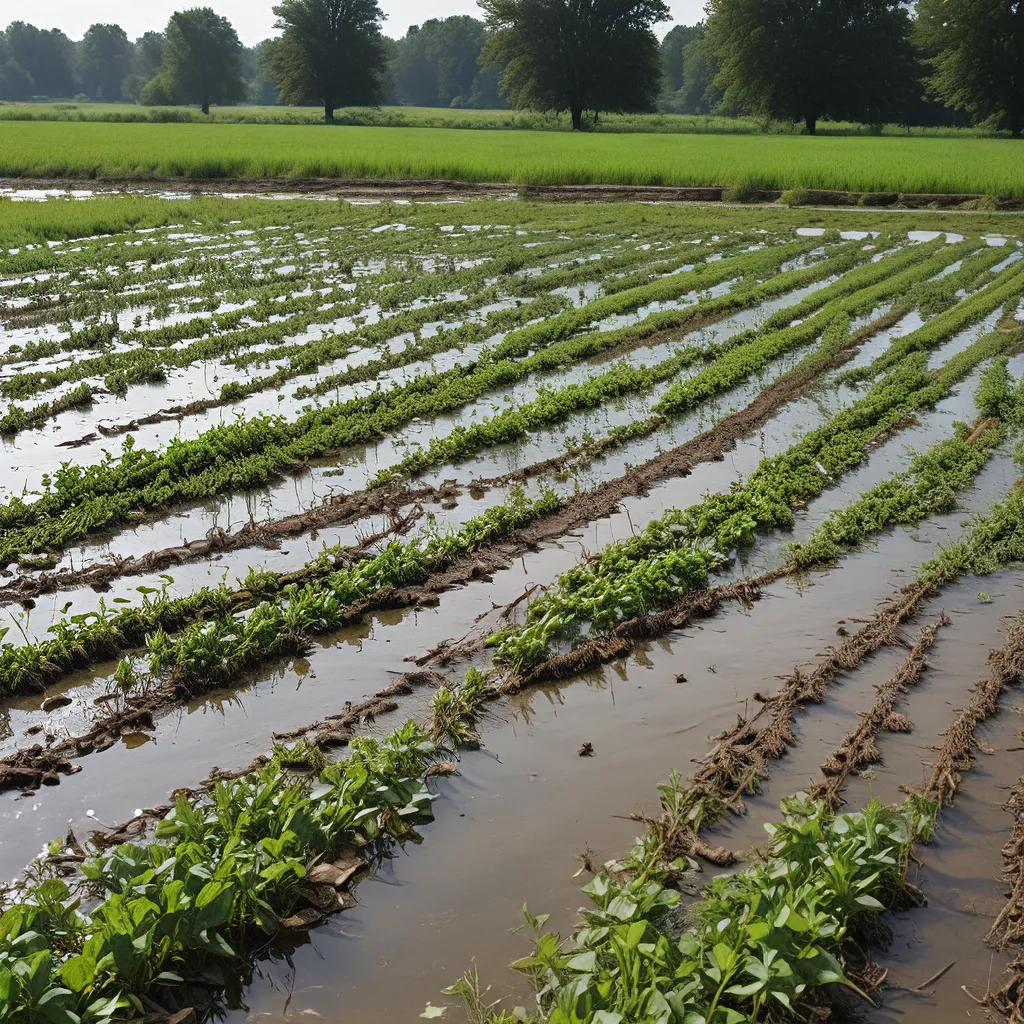
As a passionate advocate for environmental sustainability, I’ve always been fascinated by the intricate web of connections between our water systems, agricultural practices, and the health of our planet. Today, I want to dive deep into an often overlooked but critically important issue: the role of wastewater treatment in sustainable agriculture and nutrient recycling.
The Nutrients at the Heart of the Matter
Let’s start by understanding the core challenge we’re facing. Our modern agricultural system has become heavily reliant on synthetic fertilizers, particularly nitrogen and phosphorus. These nutrients are essential for plant growth and crop yields, but their overuse and mismanagement have led to some serious global sustainability concerns.
For one, the phosphorus we use in fertilizers is primarily mined from a finite number of commercial deposits around the world. Experts estimate that these reserves may only last another 50-100 years, given the projected 50-100% increase in demand by 2050. That’s a sobering thought, isn’t it?
And while nitrogen fertilizer can be produced from the abundant nitrogen gas in our atmosphere, the industrial Haber-Bosch process used to do so requires massive amounts of energy, contributing significantly to greenhouse gas emissions. Even organic farming, which avoids synthetic nitrogen, still relies on manure and other sources that ultimately derive from the same energy-intensive industrial processes.
The problem doesn’t end there. When these nutrients are applied in excess of what plants can actually use, they can escape into the surrounding soils, air, and waterways, causing all sorts of environmental havoc. Algal blooms, aquatic dead zones, and contaminated drinking water are just a few of the consequences we’ve witnessed.
Closing the Nutrient Loop
So, what’s the solution? Well, a growing number of sustainability-minded experts and organizations are pointing to the need to “close the nutrient loop” – that is, to recover and recycle the nutrients in our waste streams, rather than letting them slip away into the environment.
As the Center for Sustaining Agriculture and Natural Resources at Washington State University explains, this involves a range of ongoing efforts to ensure that nutrients are applied in ways that match up with plant needs, and to recover them from places where they concentrate, like wastewater treatment plants, livestock facilities, and food processing plants.
The key is to recover these nutrients in more concentrated, homogenous, and transportable forms than they exist in raw manure or other organic waste. This makes it easier to get them back to the croplands where they’re needed, rather than letting them accumulate in urban and industrial areas.
Emerging nutrient recovery technologies, still in various stages of development and commercialization, offer promising solutions. Some are designed to work with specific types of untreated waste, like dairy manure, while others are better suited for use in conjunction with anaerobic digestion processes.
But nutrient recovery alone isn’t the whole solution. As the experts caution, these technologies still need to be paired with improved nutrient management strategies to ensure that the recovered nutrients are applied to croplands in the right amounts and at the right times. Otherwise, they can still potentially be lost to the environment.
The Promise of Wastewater Treatment
This is where wastewater treatment plants come into play as a crucial part of the nutrient recycling puzzle. These facilities have long been viewed primarily as a means of cleaning up our water supplies and protecting aquatic ecosystems. But increasingly, they’re being recognized for their potential to recover and recycle valuable nutrients.
At Alpha Wastewater, for example, we’re at the forefront of developing and implementing advanced nutrient recovery technologies. By extracting phosphorus, nitrogen, and other nutrients from the wastewater stream, we can produce fertilizer products that are ready to be transported back to farms and incorporated into sustainable agricultural practices.
It’s a win-win-win scenario. We reduce the burden on our finite phosphorus reserves, cut down on the energy-intensive production of synthetic nitrogen fertilizers, and keep these essential nutrients cycling productively within our food system, rather than allowing them to pollute our waterways.
A Future of Abundance, Not Scarcity
Of course, the transition to a more circular, nutrient-recycling economy won’t happen overnight. There are still technological, logistical, and regulatory hurdles to overcome. But the potential benefits are enormous, both for the environment and for the long-term viability of our global food supply.
Imagine a future where wastewater treatment plants are not just cleaning our water, but actively recovering and redistributing the nutrients our crops need. Where we’ve moved beyond the linear, wasteful “take-make-dispose” model of the past, and instead embrace a regenerative, closed-loop approach to managing our resources.
It’s a future that’s worth fighting for – one where we can ensure the abundance of essential nutrients, rather than facing the specter of scarcity. And that’s a future that I, for one, am deeply committed to helping bring about.
So, what do you think? Are you as excited about the prospects of wastewater-enabled sustainable agriculture as I am? I’d love to hear your thoughts and perspectives on this crucial issue. Let’s keep the conversation going and work together to create a more resilient, nutrient-rich world for generations to come.